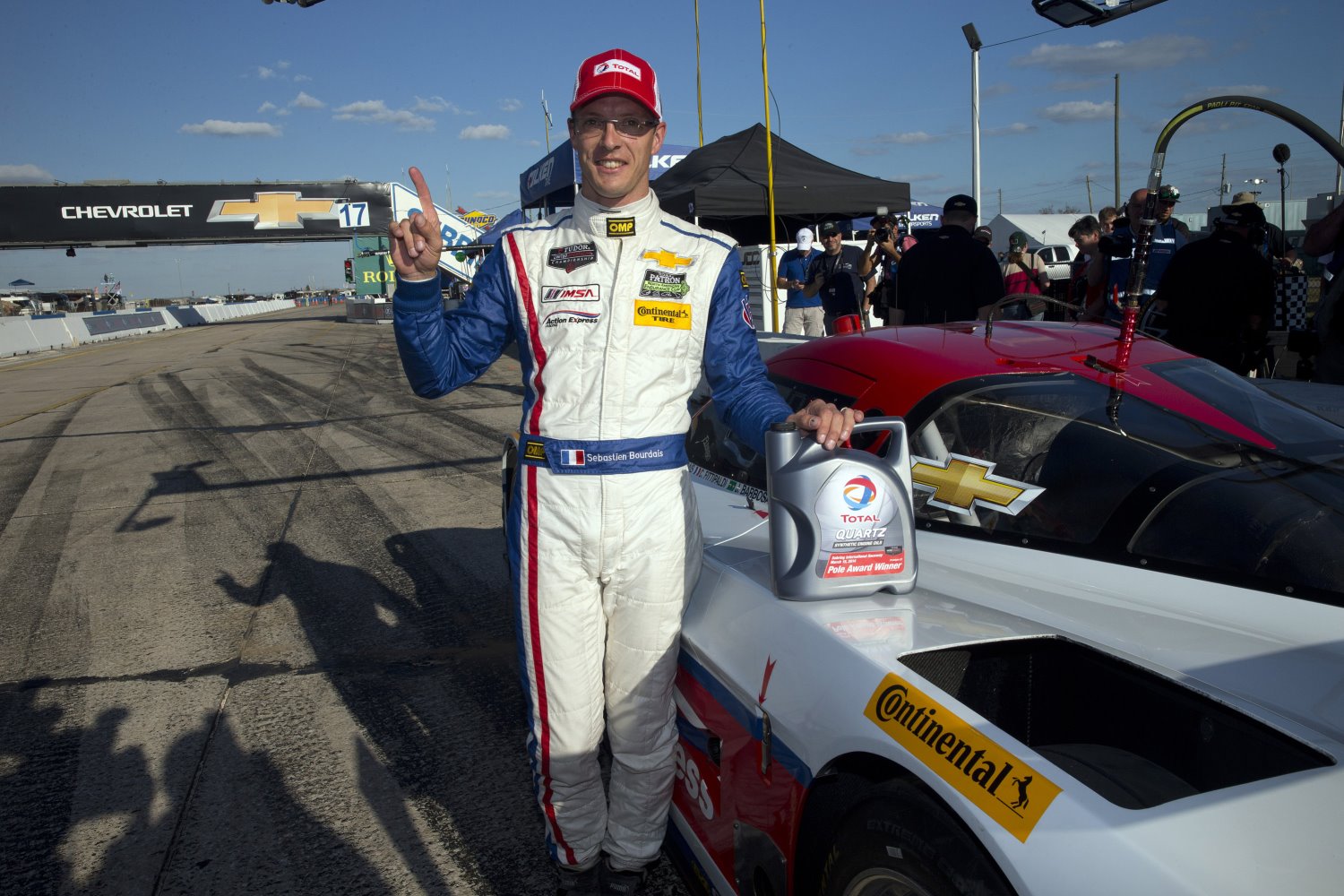12 Hours of Sebring part of United SportsCar future
 |
| Bourdais signals #1 after winning the pole |
For racing fans, the new United SportsCar Championship means a simplified schedule and only one major North American series to follow.
For St. Petersburg resident Sebastien Bourdais and two teammates in today's 12 Hours of Sebring, it means something simpler: the chance at the first Florida double in more than 15 years.
IndyCar regular Bourdais teamed with Joao Barbosa and Christian Fittipaldi to win January's 24 Hours of Daytona in a Corvette Prototype for the Action Express team. The trio goes into today's race with a shot of sweeping Daytona and Sebring, America's two longest and most prestigious sportscar races, which are now under one sanctioning body.
"There's no questioning that it's always better to be unified," Bourdais said this week. "I think it's only going to get better from there. It's too small a world to have too many series."
The Grand-Am and American Le Mans Series divided loyalties, with Daytona as the top race in the former series and Sebring headlining the latter.
"It's a big deal. It never should have been any other way," Ryan Hunter-Reay said. "Obviously there's a massive amount of money and manufacturers pulling the political strings. That's how we got off on the wrong track. But unification is priceless. … You can really feel the energy in the paddock, that everybody wants to make this work."
Fort Lauderdale's Hunter-Reay, racing the SRT Viper in the GT Le Mans class today alongside Dominik Farnbacher and Marc Goossens, is among several IndyCar standouts at Sebring. Scott Dixon, Tony Kanaan, Simon Pagenaud, Justin Wilson and Ryan Briscoe are only a few of the open-wheel drivers competing at Sebring.
Bourdais, who grew up in the shadow of roads used for the famed 24 Hours of Le Mans race in France, is happy with his team and the opportunity at Sebring. But he's a bit concerned that the unified format is so appealing that, at more than 60 cars, the field might be too big.
"There's no easy pass at Sebring," Bourdais said. "There's only two short straights, it's twisty, it's tight, and it gets tricky at night because it's not so well-lit, though the corners are."
That produces an intensity that is already magnified because, as reliability rises, endurance races are producing finishes with three or more cars on the lead lap, rather than the multiple-lap margins of victory that used to be the norm. The depth of talent is also notable.
"The endurance races are just becoming longer sprint races," Hunter-Reay said. "One stint you could be driving against the best in sportscar, the next you're driving against the best in IndyCar, at times some of the best in NASCAR."
So it won't be easy, but Bourdais, Barbosa and Fittipaldi can become the first tandem since Didier Theys, Gianpiero Moretti and Mauro Baldi in a Ferrari 333 in 1998 to sweep Daytona and Sebring in one season (Arie Luyendyk was also part of the driving lineup at Daytona).
They took a step toward that goal Friday, with Bourdais earning the pole by 0.169 seconds with a lap of 1 minute, 51.917 seconds (120.303 mph) around the 3.74-mile track.
"This was great qualifying for us," Bourdais said. "It's been very difficult to get a read on the car (in practice sessions); traffic has been very difficult. It's been tough to get the balance of the car, tough to get into a rhythm. But in qualifying, you could string a few laps together. I was able to do that and by the end of qualifying the car was pretty optimized." Jim Tomlin/Tampa Bay Times
